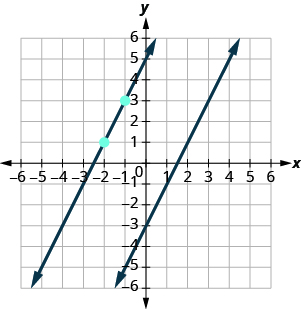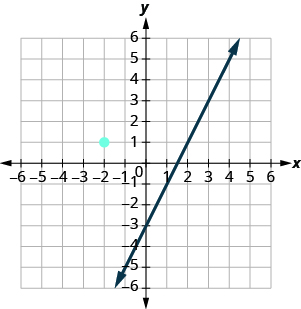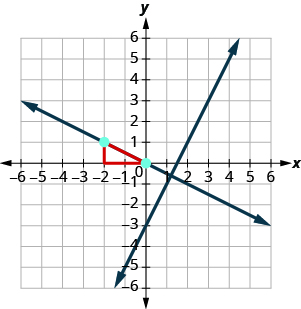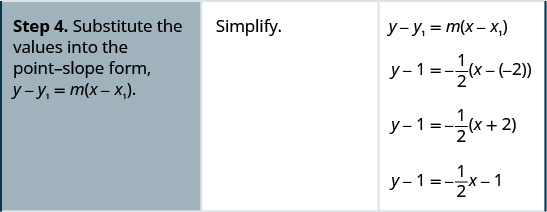| << Chapter < Page | Chapter >> Page > |

Do the lines appear parallel? Does the second line pass through ?
Now, let’s see how to do this algebraically.
We can use either the slope–intercept form or the point–slope form to find an equation of a line. Here we know one point and can find the slope. So we will use the point–slope form.
Find an equation of a line parallel to that contains the point . Write the equation in slope–intercept form.





Does this equation make sense? What is the y -intercept of the line? What is the slope?
Find an equation of a line parallel to the line that contains the point . Write the equation in slope–intercept form.
Find an equation of a line parallel to the line that contains the point .
Now, let’s consider perpendicular lines. Suppose we need to find a line passing through a specific point and which is perpendicular to a given line. We can use the fact that perpendicular lines have slopes that are negative reciprocals. We will again use the point–slope equation, like we did with parallel lines.
The graph shows the graph of . Now, we want to graph a line perpendicular to this line and passing through .

We know that perpendicular lines have slopes that are negative reciprocals. We’ll use the notation to represent the slope of a line perpendicular to a line with slope . (Notice that the subscript ⊥ looks like the right angles made by two perpendicular lines.)
We now know the perpendicular line will pass through with .
To graph the line, we will start at and count out the rise and the run 2. Then we draw the line.

Do the lines appear perpendicular? Does the second line pass through ?
Now, let’s see how to do this algebraically. We can use either the slope–intercept form or the point–slope form to find an equation of a line. In this example we know one point, and can find the slope, so we will use the point–slope form.
Find an equation of a line perpendicular to that contains the point . Write the equation in slope–intercept form.





Find an equation of a line perpendicular to the line that contains the point . Write the equation in slope–intercept form.
Find an equation of a line perpendicular to the line that contains the point .
Find an equation of a line perpendicular to that contains the point . Write the equation in slope–intercept form.
Again, since we know one point, the point–slope option seems more promising than the slope–intercept option. We need the slope to use this form, and we know the new line will be perpendicular to . This line is vertical, so its perpendicular will be horizontal. This tells us the .
Sketch the graph of both lines. Do they appear to be perpendicular?

Notification Switch
Would you like to follow the 'Elementary algebra' conversation and receive update notifications?